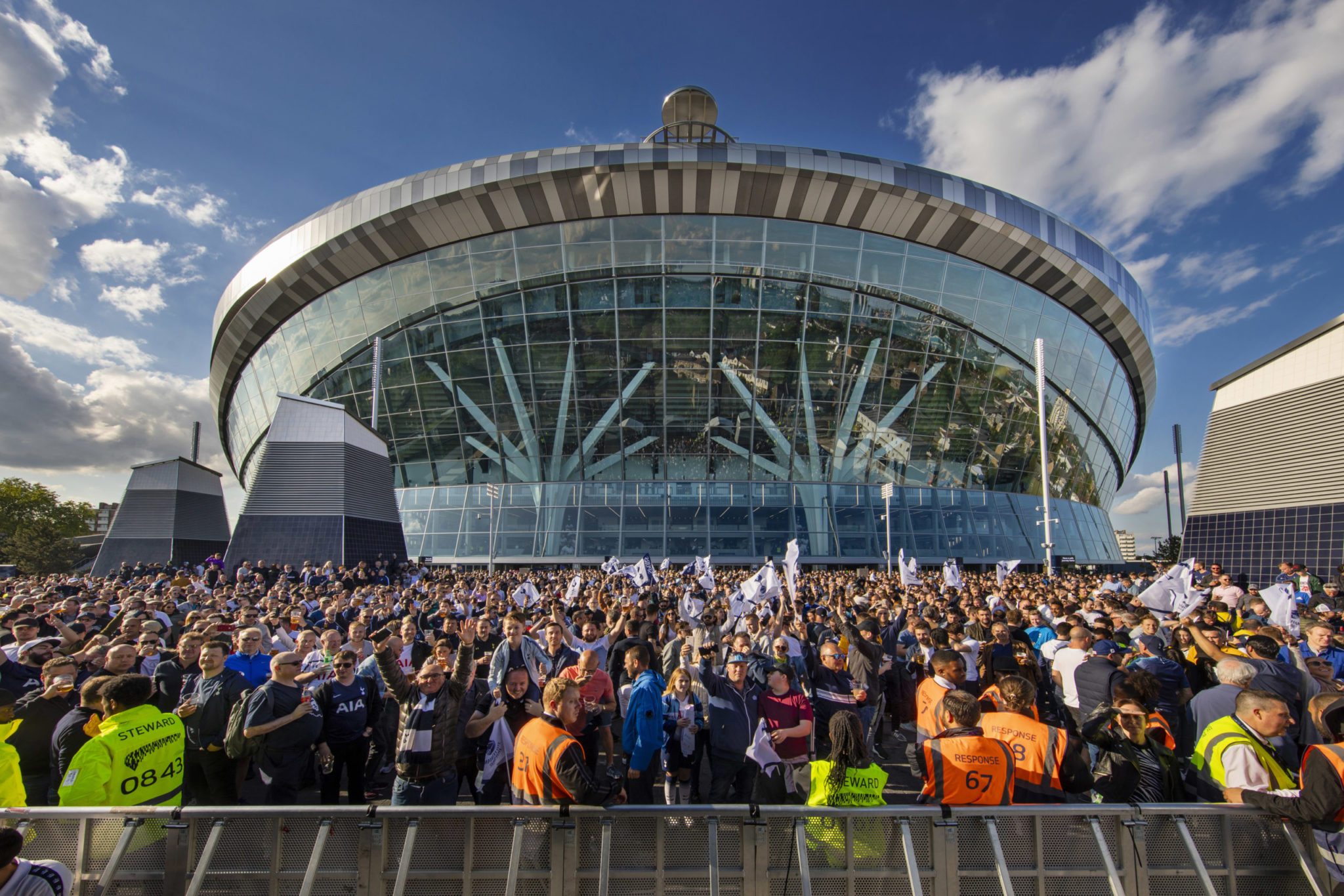The Four C's of Fan Engagement: Connectivity, Consistency, Context, and Culture
The sports industry has been experiencing some growing pains both generationally and technologically, and it’s looking stronger than ever because of it. Global sports industry revenues are expected to reach $260 billion by 2033, fueled by growth in audiences and consumption, diversified experiences, and sports venues creating more value by engaging more directly with fanbases.
Sean Callanan, founder of Sports Geek and host of the Sports Geek podcast, and a fixture across the sports marketing and SEAT community here in the US is excited about the opportunity it presents for brands in the industry. To maintain a strong presence and build lasting connections in this new paradigm, Sean shared with us a few key pillars that sports teams need to focus on in their approach to branding and digital marketing, which we’ve coined the “Four C’s”: Connectivity, consistency, context, and culture. These "Four C's" form the bedrock of a successful sports entertainment brand that stays ahead of the curve, brings in revenue, and connects meaningfully with its fans.

Connectivity: meeting fans wherever, whenever
This is the era of on-demand, where immediacy is not just expected—it's a fundamental part of the fan experience. Fans now expect instant access to games, stats, player updates, and other content, all at their fingertips, whether through a mobile app, streaming service, or social media platform. The ubiquity of mobile devices and streaming services has fundamentally transformed how sports are consumed, shifting from traditional broadcast models to more flexible, user-controlled experiences.
As Sean observes, “We're living in a world where you press a button and a car turns up, you press a button, and you can watch whatever you want. . . This shift has sports leagues like the NFL expanding into platforms like Amazon Prime to meet the growing demand for instant, anywhere access to content.” This adjustment in strategy is about more than just enhancing accessibility; it’s also about creating a seamless, integrated experience that aligns with how fans live their daily lives, where the mobile screen is often the primary point of engagement.
Mobile has evolved from being the “second screen” behind cable TV to firmly establishing itself as the “first screen” for engagement. Beyond being a channel for consumption, mobile enriches the on-premise experience by offering navigation around the venue, enabling mobile ordering and purchasing, and creating opportunities for photos and social sharing. The role of mobile is absolutely critical, and integrating it seamlessly into the ecosystem, and ensuring venues have the infrastructure in place to support it, is an ongoing process.
To build connectivity into a digital brand strategy, sports teams must deliver content across multiple platforms for ease of access that cater to diverse fan preferences. This means not only ensuring that content is readily available but also personalized based on how fans consume it. Whether through a dedicated mobile app that offers real-time updates, a streaming service that provides instant access to games, or engaging social media content, the goal is to make it as easy and intuitive as possible for fans to engage with the brand.
Consistency: building trust across platforms
Consistency in branding is a must for establishing trust and a strong identity in the minds of fans. This is where storytelling becomes particularly important—crafting a narrative that resonates with fans and is consistent across all touchpoints.
"You want to make sure that the fan, any fan, is having the experience they want because, yes, there might be the fan that goes to every single game and they want a consistent experience, but there will also be people who are at a sporting event for the first and possibly only time in their lives,” says Sean. “You have to be able to meet them both.”
This variance in fan vantage points is both created and nurtured by the power of effective storytelling. People come to games for different reasons and with different levels of investment, but everyone is there because they want to be part of a broader story. Because of this, unified brand experiences are necessary in order to present a resonant message that lands well whether a fan is engaging online or attending a game in person, whether they’re a diehard fan or a more casual observer.
To achieve this, the tone, style, and messaging used on team channels must reflect what’s happening at the in-stadium level. This requires a coordinated effort between social media teams, content creators, and in-stadium staff to create a cohesive experience. For example, if a team's digital presence is vibrant and playful, the in-stadium experience should echo this energy through interactive elements, modern amenities, and fan engagement initiatives.

Context: engaging diverse audiences, effectively
In the world of sports entertainment, as experiences become more and more diversified, context is extremely important. Different audiences require different approaches, and understanding the nuances of each fan base is essential for maintaining engagement. Whether targeting local die-hard fans or expanding into international markets, sports teams must be deeply aware of the context in which they operate.
Sean explains, "Two different teams could be in the same region and have an entirely different approach to their targeted audience, depending on what kinds of experiences they’re offering. For example, if you're looking at the two LA teams in the NFL, the Chargers and the Rams, they have a really different approach to how they go about doing social."
The Los Angeles Chargers, still relatively new to the LA market after relocating from San Diego, have adopted a strategy that heavily leans into humor and the culture of fun, knowing that their fan base is diverse and that they need to build strong connections and affinity quickly. "The Chargers are really leaning into meme culture and having fun with their content. Their fans appreciate that humor, and it's helping them build a fan base in LA," Sean says. This strategy reflects the Chargers' understanding that they need to create a vibrant and engaging digital presence to capture the attention of a city that's still getting to know them.
On the other hand, the Los Angeles Rams, despite originally being from LA, have had to reestablish their presence in a market that’s changed significantly since they last called it home. Their approach is more brand-led, aligning themselves with the Hollywood glitz and the celebrity culture that defines LA. "The Rams are very focused on branding around what they want to be—glamorous, high-end, and synonymous with the Hollywood lifestyle. They're tapping into the city's identity by associating themselves with the celebrity style of LA."
To implement a marketing strategy that takes context into account, sports teams should begin by thoroughly analyzing their target audience, understanding their preferences, behaviors, and cultural influences. This involves segmenting the audience based on factors like geography, demographics, and psychographics, and then tailoring content and experiences that resonate with each segment's unique identity. Staying adaptable is also important, so that teams can adjust strategies when fan expectations and market dynamics inevitably evolve.
Culture: staying relevant in a fast-changing world
Culture plays a critical role in keeping a brand relevant and authentic. This goes far beyond merely jumping on social media trends—it requires a deep understanding of the cultural zeitgeist and aligning the brand's messaging and actions with it. For sports teams, cultural attunement means being highly responsive to social issues and trends, while also knowing when and how to engage with them. This involves having a talented team that can quickly identify emerging trends and determine whether they align with the team's identity and resonate with their fan base.
For example, during the Olympics, a viral moment involving a laid-back Turkish sharpshooter became a meme sensation. Some sports teams capitalized on this by superimposing their players’ faces onto the meme, cleverly aligning with the trend to engage their audience. But as Sean notes, the key is understanding whether jumping on such trends makes sense for your brand and your fans. “It's not about getting approval from a CMO to play in meme territory; it’s about asking, is this a space we want to be in? Does it fit our brand and our fan base? And does it align with our partners?”
Cultural attunement also extends to brand partnerships. Teams should seek partnerships that not only reflect current trends but also resonate with their core values and the expectations of their fan base. For instance, a partnership with a popular beverage brand could involve co-branded content that taps into a cultural moment, while still maintaining the team's authenticity and identity. The goal is to ensure that every action—whether it's jumping on a social trend or forming a new partnership—is deliberate, fan-centered, and aligned with the broader brand strategy.
While the Four C's are essential for building a strong brand, they also directly contribute to revenue generation. By creating a convenient, consistent, contextual, and culturally attuned brand, sports teams can attract more fans, increase engagement, and open up new revenue streams.
Looking ahead: The stadium as a destination
Several trends are emerging in sports entertainment branding that will further shape how teams connect with fans, but one of the most impactful is the continued emphasis on creating a destination experience within stadiums.
“The modern fan doesn’t just sit in their seat for the entirety of a game, especially in sports like baseball, where the action is spread out over several hours,” Sean observes. “Instead, they expect to pop in and out, catching the game from various vantage points around the stadium, all while staying connected to the action through screens and digital displays. Teams and venues have responded by being more deliberate in how they design these spaces, ensuring that fans can access game updates, replays, and other content no matter where they are in the stadium.”
This evolution is deeply connected to the broader transformation brought about by digital media networks. These networks make it possible to deliver content across multiple screens and platforms simultaneously so as to draw fans deeper into the game, whether they’re watching a live play unfold or interacting with a virtual environment designed to enhance their connection to the team.
In this way, the trend towards creating a destination experience is as much about leveraging stadium and arena technology solutions as it is about enhancing the physical environment. It's an approach that acknowledges the changing expectations of fans, who now demand a more interactive, connected, and engaging experience. By integrating digital signage networks into the stadium experience, sports teams are not only meeting these expectations but also paving the way for new forms of fan engagement that extend far beyond the traditional confines of the game. This includes incorporating more entertainment options, enhancing food and beverage offerings, and integrating technology like AR and VR to create immersive experiences.
A solid strategy makes for a winning team
The Four C's of sports entertainment branding—Connectivity, Consistency, Context, and Culture—are essential for building a strong, lasting connection with today’s sports fans. In an era where expectations are higher than ever and where the competition for attention is fierce, these pillars provide a framework for teams to not only meet but exceed the needs of their audiences. By focusing on these core elements, sports brands can create memorable experiences that resonate deeply with fans, foster long-term loyalty, and ultimately drive sustained success both on and off the field.
For more on Sean Callanan and his perspective on driving deep connections between fans, teams, and sponsors, consult with him at linkedin.com/in/seancallanan
For a closer look at how we bring digital signage technology solutions to Stadium and Arena venues and teams, tap here: https://cri.com/who-we-serve/stadiums-arenas-entertainment
Discover how we bring hardware, software and inspiring content together across the concourse, concession, and suites for fan engagement.
Share this
You May Also Like
These Related Stories

Revamping the Stadium Experience To Lure Gen Z and Advertising Investment

Score Big: Unleashing the Branding Power of Digital Signage in Sports Arenas


